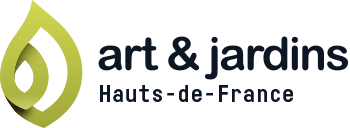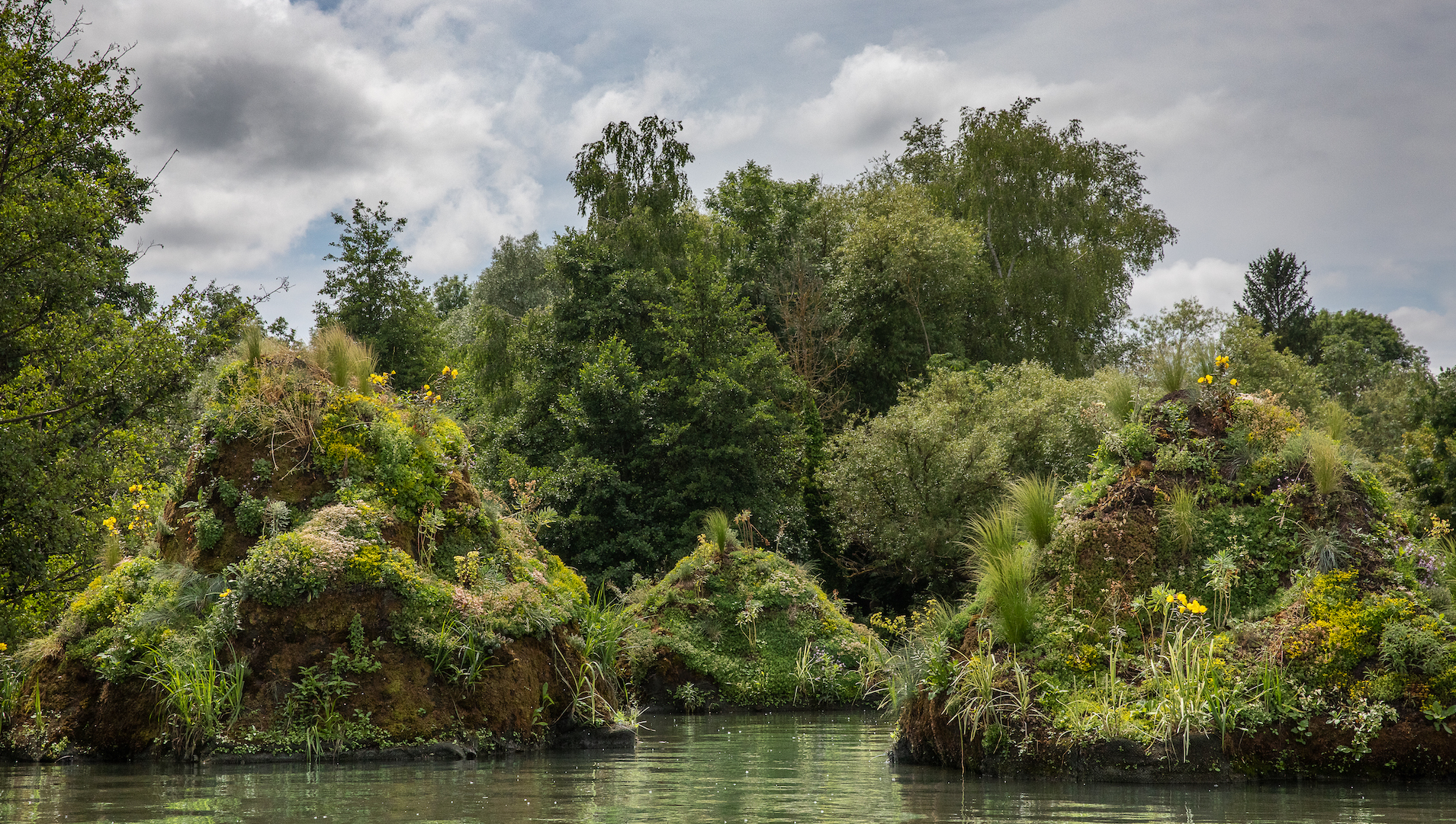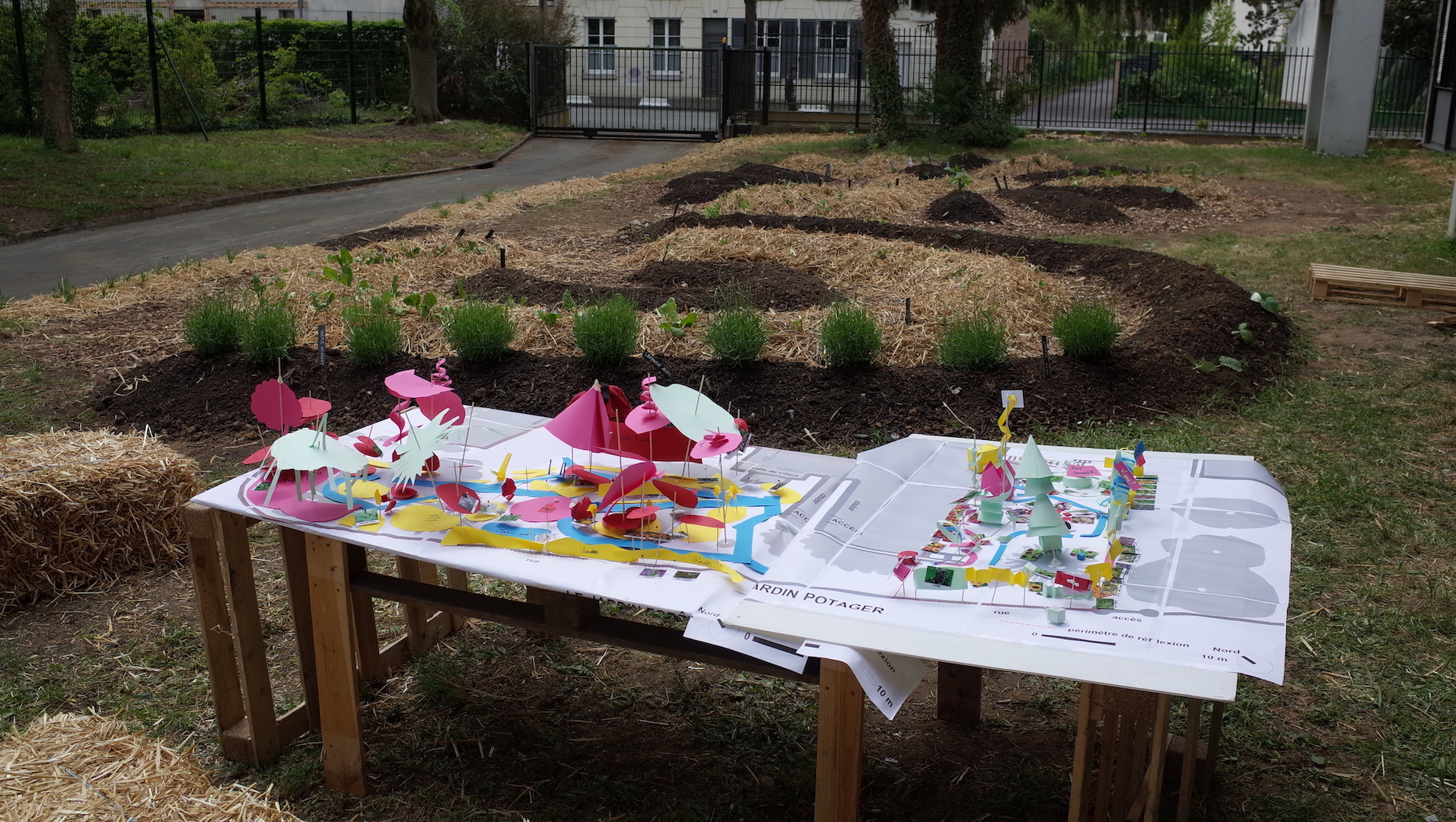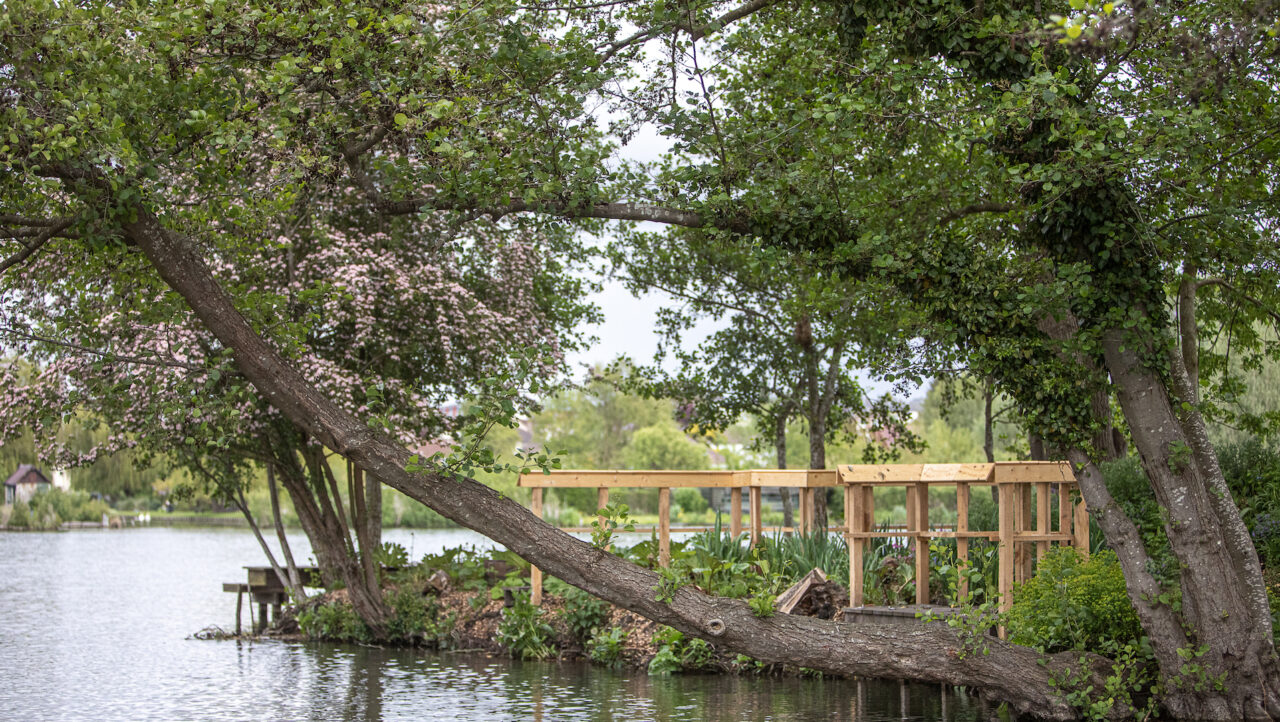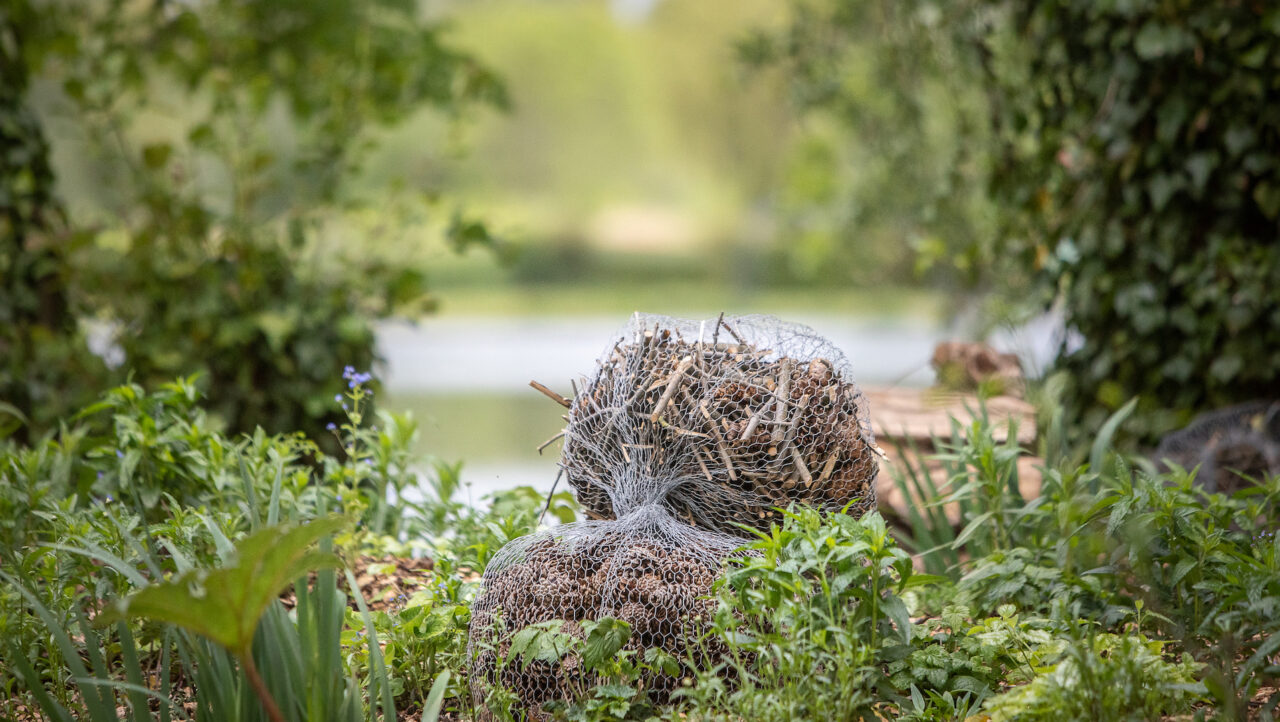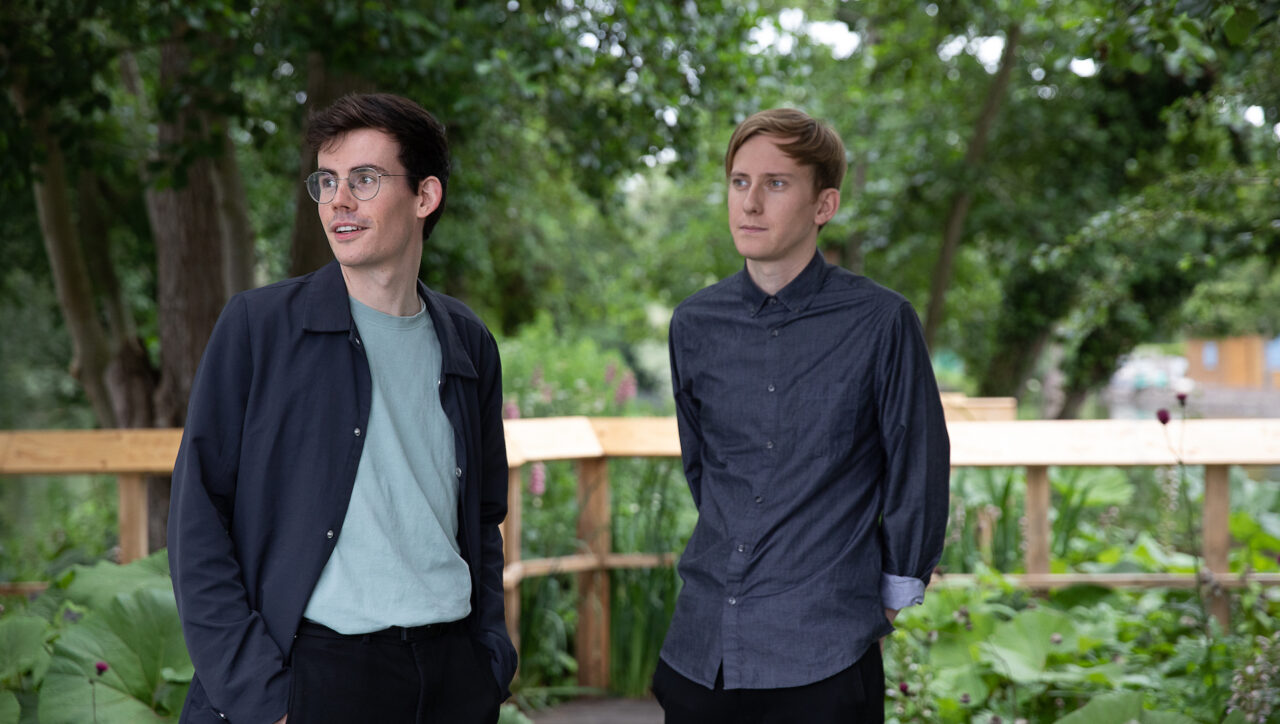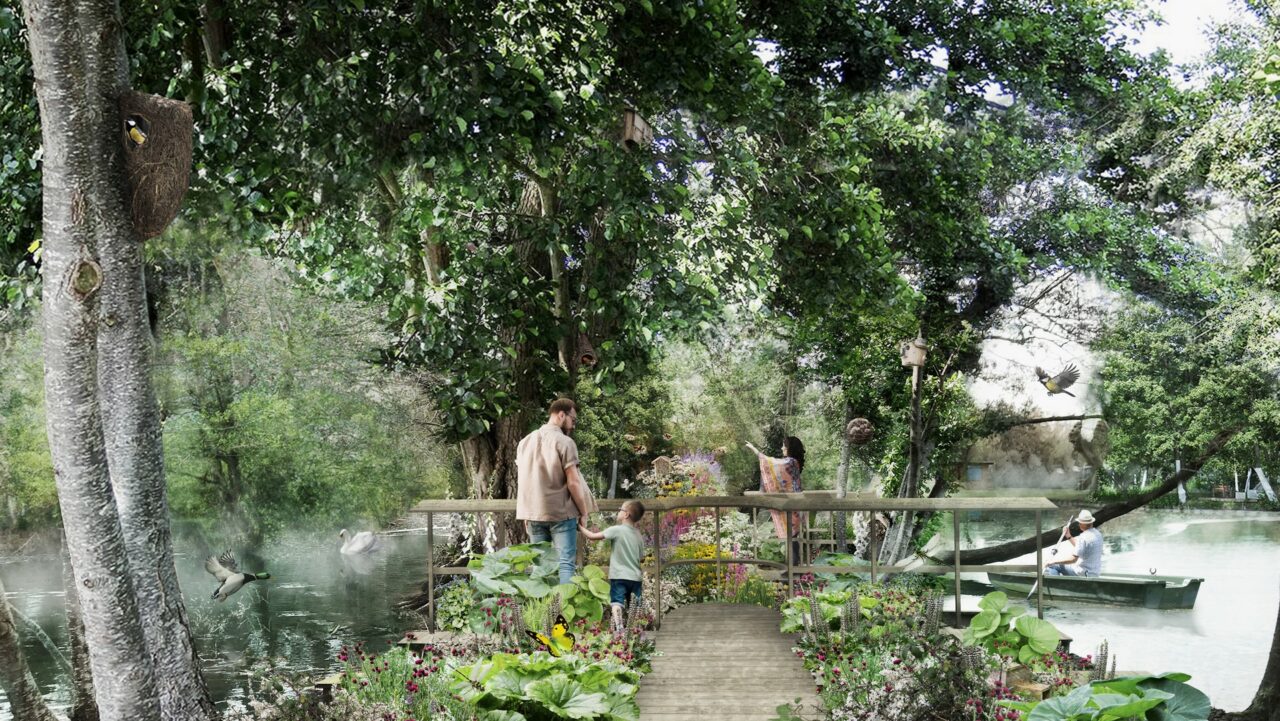Human technological progress has always been able to draw on bio-imitation or even biomimicry. If we study the shape of whale tails to design airplane wings, or the eyes of moths to improve screens, it is seldom for the benefit of nature. The number of aeroplane wings increases as the number of whales declines, while the relentless light pollution from our screens gradually reduces the territory of moths. Humanity recognizes itself as the main cause of climate change, the destruction of environments and the extinction of hundreds of animal and plant species.
So now is the time to turn things around.
This time it is nature that draws on the resources of mankind. In the Hortillonnages of Amiens, a small island is the scene of a turnaround. A garden where military engineering technology, as used in human citadels, becomes the inspiration for a fortified ecosystem.
The covered way where the soldiers stood guard is replaced by a thorny bank, populated by plants with resplendent foliage and sharp thorns. It provides perfect shelter for reptiles and rodents and keeps the invaders at bay.
The flooded ditch, which together with the outer wall formed the city ramparts, is covered with aquatic plants. Logs provide the ideal habitat for amphibians and insects, protecting them from voracious fish and curious hands.
The suburbs and the city, where the people swarmed, turns into a dense vegetable wasteland, with many native flowers, where pollinators are busy. The whole thing is covered with mono- specific nesting boxes for insects and arachnids.
Finally, where the castle created the attraction, a mound marks the observation area for the human visitor. Humans do not have access to the fortress but do benefit from two viewpoints which provide views of this protected ecosystem through the defences of the bank of thorns.
The Fortified garden offers areas for the development and observation of species that are native to the Somme. Using only recycled, natural and local materials, this is the opportunity to recreate valuable habitat, habitat which is quickly disappearing. An anthropodecentric design of a garden which, in the long term, could allow the identification and re-establishment of species in decline.
The artist
studio audal

